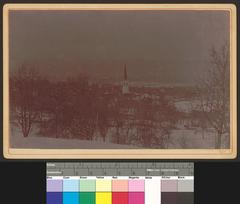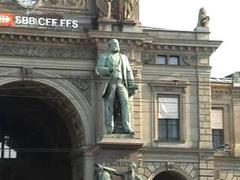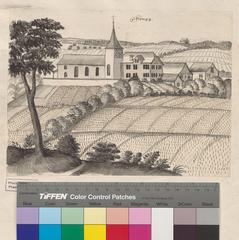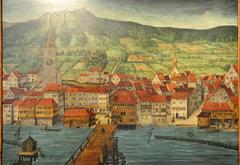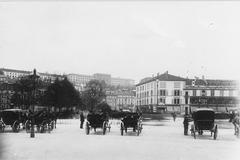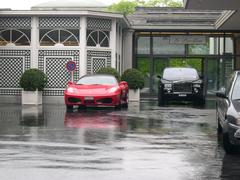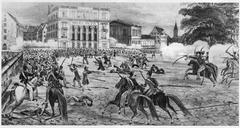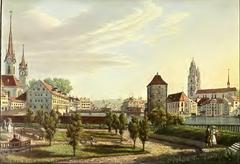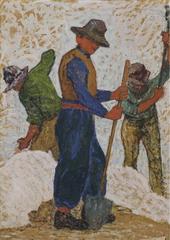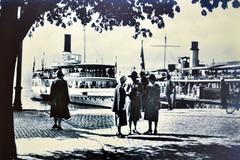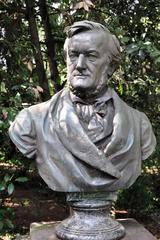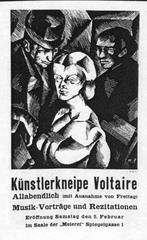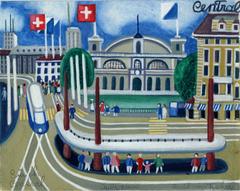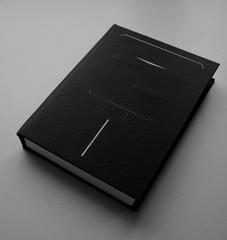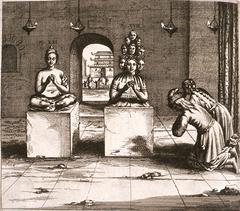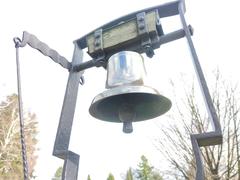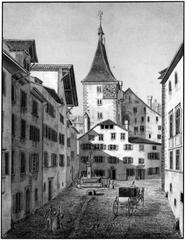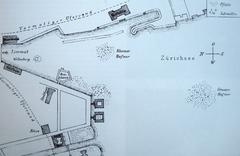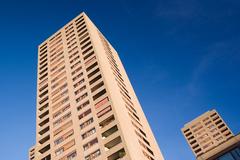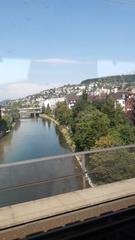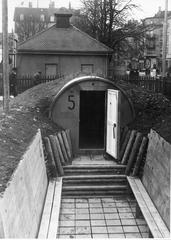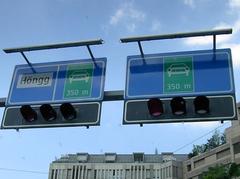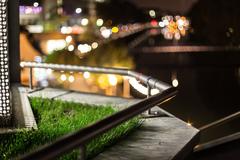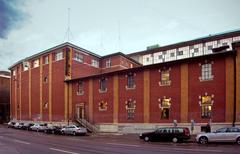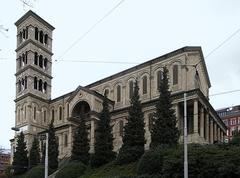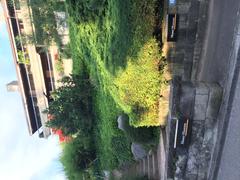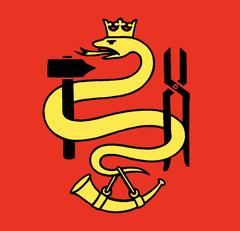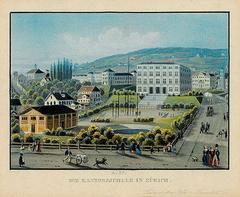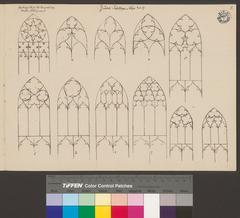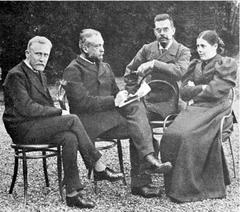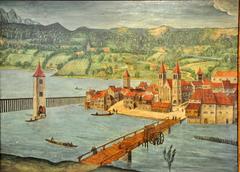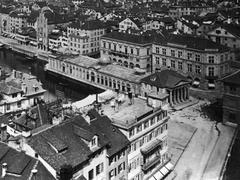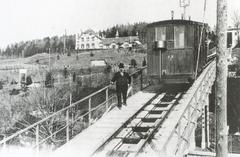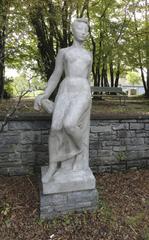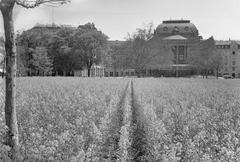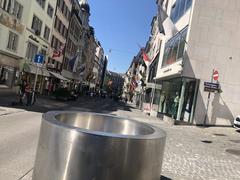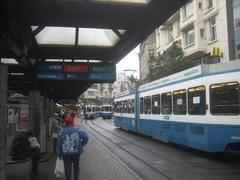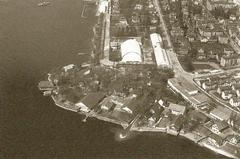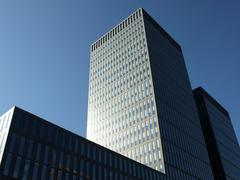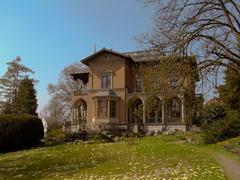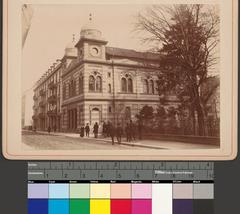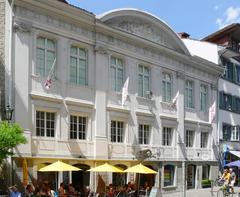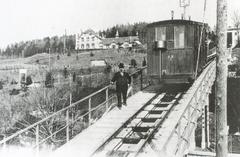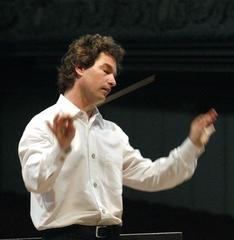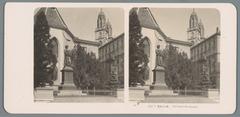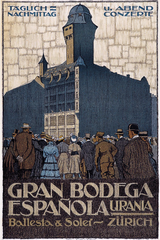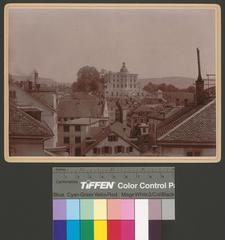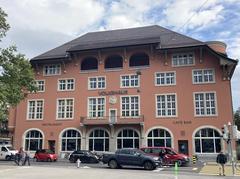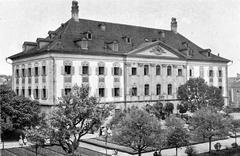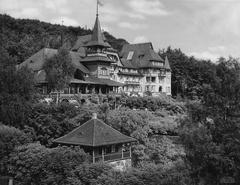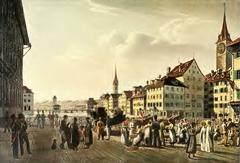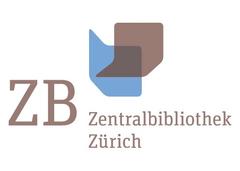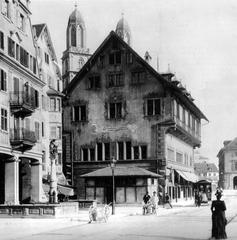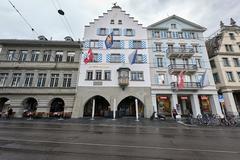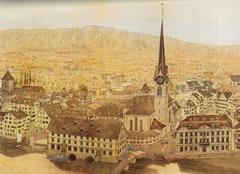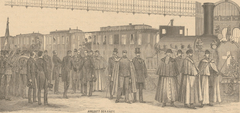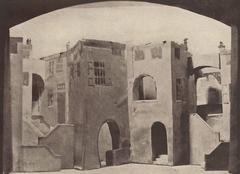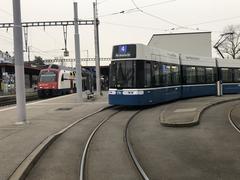Signal Box Building Nord Zürich: Visiting Hours, Tickets & Historical Site Guide
Date: 14/06/2025
Introduction
Zürich is celebrated for its seamless integration of historic legacy and contemporary innovation, and nowhere is this blend more evident than in its railway infrastructure. Among Zürich’s noteworthy railway landmarks, the Signal Box Building Nord (Stellwerk Nord) stands out as a symbol of architectural ingenuity and technological advancement. Located at the intersection of the dynamic Zürich West and Zürich Nord districts, Signal Box Nord is a vital operational facility within one of Europe’s busiest rail networks. While not regularly open to the public, the building’s design, function, and context attract railway enthusiasts, architecture admirers, and cultural visitors seeking to understand Zürich’s urban transformation.
This comprehensive guide covers the historical context, architectural highlights, visiting information, accessibility, and nearby attractions for those interested in exploring Zürich’s railway heritage. Whether you are planning a visit or researching the evolution of Swiss transport, you’ll find essential facts, practical tips, and curated resources to enrich your experience (ArchDaily; Virginia Duran; Swiss National Museum).
Table of Contents
- Introduction
- Early Development of Zürich’s Railway Infrastructure
- Zürich Hauptbahnhof: Visiting Information
- Signal Boxes in Zürich: Evolution and Significance
- Signal Box Nord: Architecture and Technology
- Modernization and Expansion Projects
- Integration Within the Railway Network
- Operational Challenges and Innovations
- Visiting Information for Signal Box Nord
- Nearby Attractions and Practical Tips
- Frequently Asked Questions
- Conclusion
- References
Early Development of Zürich’s Railway Infrastructure
Switzerland’s railway era began in 1847 with the Zürich–Baden line, establishing Zürich as a transport pioneer. The opening of Zürich Hauptbahnhof (Main Station) in 1871, designed by Jakob Friedrich Wanner, further cemented the city’s status as a key railway hub (ArchDaily). Over the subsequent decades, the network expanded to connect Zürich with regional and international destinations, integrating trams and suburban railways and paving the way for the modern S-Bahn system.
Zürich Hauptbahnhof: Visiting Information
Zürich Hauptbahnhof is one of Europe’s busiest and most impressive train stations. Open 24 hours a day, it is accessible for travelers at all times, with shops and services operating from early morning until late evening. Tickets can be purchased at counters, self-service machines, online via the Swiss Federal Railways (SBB) website, or through mobile apps. The station is fully accessible, with elevators, ramps, and assistance for visitors with disabilities.
Occasional guided tours offer insights into the station’s architecture and history. For updated schedules, check the SBB website or inquire at local tourism offices.
Signal Boxes in Zürich: Evolution and Significance
Signal boxes (Stellwerke) are critical to safe and efficient railway operations, controlling signals and track switches. The evolution from mechanical to electronic and digital systems has paralleled the increasing complexity of Zürich’s rail network. Modern signal boxes, like Signal Box Nord, are highly automated and networked, essential for handling Zürich’s dense train traffic.
Signal Box Nord: Architecture and Technology
Architectural Significance
Signal Box Nord is notable for its minimalist, functional design, copper-clad façade, and modular geometry that echo the industrial history of its surroundings while meeting advanced technical needs. Its form and materiality make it a landmark in Zürich West’s evolving urban landscape (Virginia Duran). The design philosophy, rooted in Swiss traditions, emphasizes clarity, efficiency, and honest material expression (Novatr).
Technology and Human Experience
Inside, Signal Box Nord integrates sophisticated railway control systems and is designed to optimize operator comfort and efficiency. The building’s layout balances technical demands with a humane work environment. While interior access is restricted, the exterior is accessible from public spaces, allowing visitors to appreciate its architectural details.
Modernization and Expansion Projects
Zürich’s growth as a transport hub has driven ongoing expansion and modernization of its railway infrastructure. Major projects include:
- Zimmerberg Base Tunnel 2: Enhances capacity between Horgen Oberdorf and Litti, improving connections to Central Switzerland and Ticino.
- Zürich–Winterthur Multitrack Project: Adds a new double-track line through the Brüttener Tunnel and expands key stations, addressing bottlenecks and supporting more frequent services (Tunnel Online).
- Zürich Stadelhofen Expansion: Upgrades the station and tunnels to boost S-Bahn capacity.
These projects require new track alignments, advanced switches, and modern signal boxes like Signal Box Nord. They are part of Switzerland’s strategy to meet a projected 30% increase in rail demand by 2050.
Integration Within the Railway Network
Signal Box Nord is a critical node within SBB’s highly electrified, ETCS-enabled network (SBB Infrastructure). The building interacts with other control centers to coordinate train movements across Zürich and beyond. National programs, such as the SZU_4.0 initiative, are upgrading signalling systems across the region (Railway News).
Operational Challenges and Innovations
Expanding and modernizing Zürich’s rail infrastructure presents logistical challenges, as construction must proceed without disrupting operations. Modular design, phased implementation (often in more than 100 phases), and remote monitoring technologies allow for upgrades with minimal service interruptions (Tunnel Online).
Visiting Information for Signal Box Nord
Visiting Hours and Tickets
Signal Box Nord is an active railway facility and is not generally open to the public. However, on rare occasions, guided tours and educational events are offered. For up-to-date information on visiting hours and ticket availability, consult the official Zürich tourism website or local event listings.
Accessibility
The building’s exterior is easily accessible from public spaces and is suitable for photography and architectural appreciation. For interior tours, accessibility features such as ramps or elevators may be available, but should be confirmed in advance.
Nearby Attractions and Practical Tips
Attractions
- Swiss National Museum: Exhibits on Swiss transport and urban development (Swiss National Museum).
- MFO-Park: A celebrated example of adaptive reuse and green urban space (MFO-Park).
- Prime Tower: A prominent modern landmark in Zürich West (Virginia Duran).
- Zürich Hauptbahnhof: The city’s grand main station.
- Zürich’s Old Town: Medieval streets and vibrant culture (Zurich’s Old Town).
Getting There
Signal Box Nord is located in Zürich Nord/West and is easily accessible via public transport (trams, buses, S-Bahn). It is close to Zürich Hauptbahnhof and within walking distance of other attractions (Lonely Planet).
Tips
- Combine visits with nearby sites for a full day of exploration.
- Photography: The copper-clad façade and urban backdrop are best captured in the late afternoon light.
- Guided Tours: Look for special events or walking tours focused on architecture or industrial history.
Frequently Asked Questions
Is Signal Box Nord open to the public?
No, regular public access is not available. Occasional guided tours may be offered.
How can I find out about tours or special events?
Check the official Zürich tourism website or local cultural event listings.
Is the building accessible for people with disabilities?
The exterior and surrounding area are accessible. For interior tours, confirm accessibility details in advance.
Can I take photographs?
Yes, photography of the exterior is encouraged.
What are recommended nearby attractions?
Swiss National Museum, MFO-Park, Zürich Hauptbahnhof, Prime Tower, and Zürich’s Old Town.
Conclusion
The Signal Box Building Nord is a compelling example of how infrastructure can achieve architectural distinction and serve as a cultural landmark. While primarily a working facility, its striking design and historical significance make it a key point of interest in Zürich’s urban landscape. Visitors can appreciate its exterior, learn about its context in the city’s railway system, and explore nearby attractions to gain a deeper understanding of Zürich’s past and present. For the latest updates on tours and events, consult official tourism resources and consider using mobile guides like Audiala for curated information.
References
- ArchDaily: 23 Spots You Shouldn’t Miss in Zurich If You Love Architecture
- Virginia Duran: The 12 Most Iconic Buildings in Zurich
- Swiss National Museum: Zurich Becomes a Major Metropolis
- Tunnel Online: Railway Expansion in the Zürich Region
- Railway News: Switzerland Stadler to Supply Signalling and Rolling Stock to SZU
- Lonely Planet: Top Things to Do in Zurich
- Zurich’s Old Town
- MFO-Park
- Novatr: Decoding Design Philosophies
